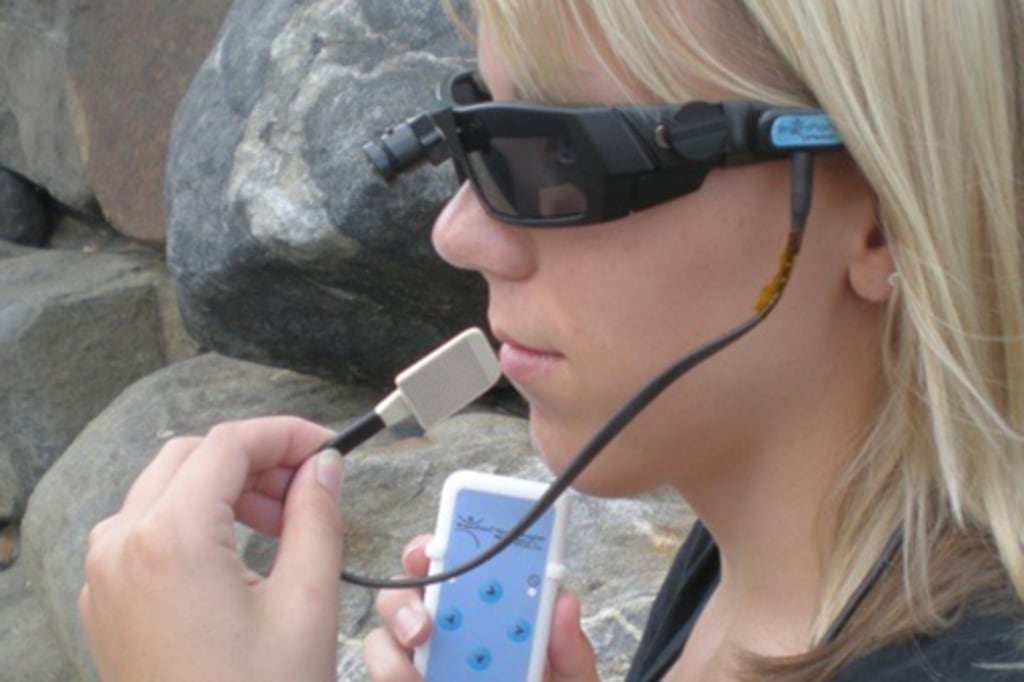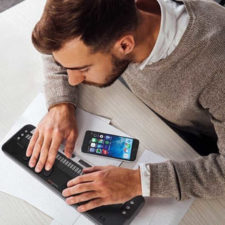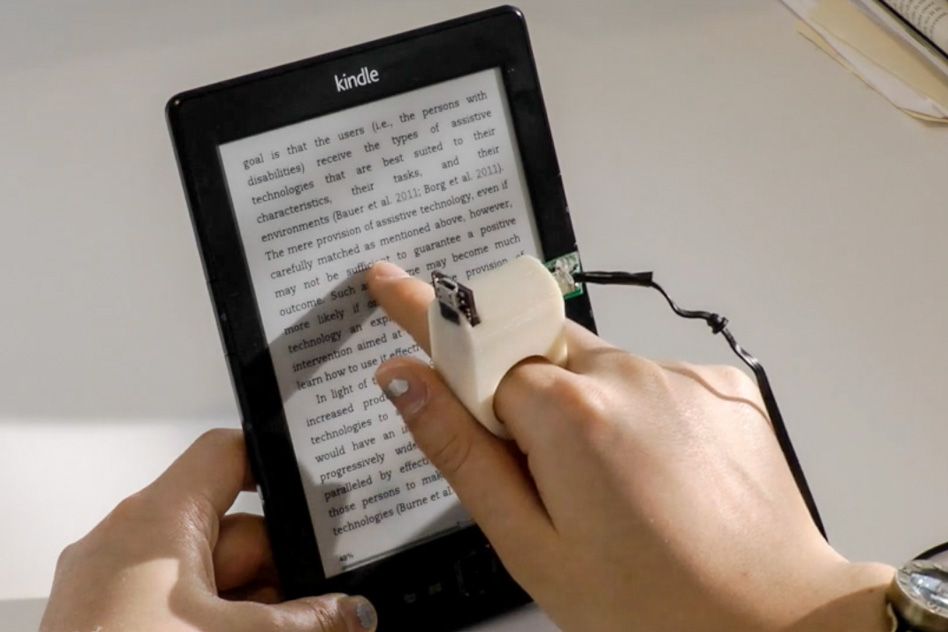Speech-to-Text Devices for Low Vision: Narrowing the Communication Gap
Wiki Article
Discover Ingenious Devices Developed for the Aesthetically Impaired
The growth of ingenious tools for the aesthetically damaged represents a substantial development in availability and self-reliance. Technologies such as wise glasses with AI capacities and mobile applications designed to offer acoustic descriptions are reshaping everyday experiences for individuals.Smart Glasses for Navigation

Smart glasses made for navigating are transforming the method aesthetically impaired people communicate with their atmosphere. These innovative gadgets use a mix of camera innovation, man-made intelligence, and auditory feedback to offer real-time details about surroundings. By using challenge detection systems, wise glasses can inform users to potential threats, making it possible for more secure movement in both unknown and acquainted settings.
The combination of GPS modern technology further enhances navigating abilities, allowing individuals to get auditory directions as they move. This hands-free approach not only promotes freedom but likewise empowers visually impaired people to navigate city landscapes with increased confidence. In addition, several wise glasses are furnished with attributes that identify spots and road indications, giving contextual information that boosts the user experience.
In addition, the growth of these devices is continually progressing, with firms functioning to boost the precision of things acknowledgment and broaden the series of navigational features. As smart glasses become extra cost effective and accessible, they hold the prospective to substantially change life for visually impaired users. Inevitably, these cutting-edge tools represent an essential step towards inclusivity, offering boosted mobility and a greater feeling of autonomy for people navigating the globe around them.

Mobile Apps for Daily Living
Just how can mobile applications enhance the day-to-day lives of aesthetically damaged individuals? Mobile applications are revolutionizing the method aesthetically impaired customers navigate their atmospheres, handle daily tasks, and accessibility info. These applications give necessary assistance with numerous capabilities, promoting independence and improving lifestyle.Numerous cutting-edge mobile applications are made particularly for day-to-day living. For circumstances, applications like Be My Eyes connect visually impaired individuals with sighted volunteers through video telephone calls, enabling them to receive real-time support with jobs such as checking out labels or browsing strange spaces. Seeing AI, created by Microsoft, utilizes fabricated intelligence to define surroundings, read text, and identify things, efficiently transforming a smartphone right into a powerful tool for day-to-day aid.
In addition, navigating apps tailored for the aesthetically impaired, such as Aira and BlindSquare, offer audio-based directions and ecological information, enabling users to traverse their environments securely and with confidence. Past navigating and prompt support, mobile applications likewise sustain organization and task monitoring, with attributes that assist customers set tips, develop to-do checklists, and track appointments. In recap, mobile applications work as indispensable sources, equipping aesthetically impaired individuals to lead even more independent and satisfying lives.
Wearable Technologies for Support
Empowerment through technology is progressively apparent in the realm of wearable tools developed to help aesthetically damaged people. These innovative tools integrate flawlessly right into day-to-day live, enhancing navigating and offering vital responses to individuals. As an example, clever glasses equipped with cameras can check out and acknowledge faces text out loud, allowing customers to connect even more with confidence in social and specialist setups.One more noteworthy innovation is making use of haptic responses systems in wearable tools. These systems utilize vibrations or other responsive signals to convey info concerning the customer's atmosphere, such as challenges or changes in terrain, boosting movement and safety and security. Wearable technologies additionally include wristbands that connect to mobile phones, informing customers to alerts via subtle vibrations, thus improving connectivity without reliance on visual signs.
As these technologies remain to develop, they are not just improving independence for visually damaged individuals but additionally fostering a better sense of incorporation in culture. By connecting the gap in between obstacles dealt with in everyday living and the potential for freedom, wearable modern technologies act as critical devices in the pursuit for equality and empowerment for those with visual disabilities.
Sound Description Devices
Sound summary tools play a crucial role in boosting ease of access for visually impaired individuals, offering them with the capability to engage with aesthetic media. Voice-activated assistive devices. These tools use narrated summaries of vital visual components in films, television shows, and live efficiencies, making certain that individuals can totally understand the context and Get the facts emotions shared via visualsSound description can be integrated into numerous platforms, consisting of streaming services, cinema screenings, and live theater. Many prominent streaming solutions now consist of audio summary as an accessibility attribute, enabling visitors to choose it conveniently. Along with conventional media, specialized apps likewise exist, giving audio summaries for art events, museums, and various other cultural occasions.
The performance of audio summary depends upon the skill of the narrators, that have to convey aesthetic information succinctly without detracting from the initial audio. Advancements in this field are likewise leading the way for more personalized experiences, where customers can change the level of detail and pacing according to their choices.
Braille Innovations and Gadgets
Braille technologies and devices have actually considerably changed the way visually damaged individuals connect with message and information. Modern improvements have led to the development of flexible tools that boost literacy and independence amongst customers.
Additionally, mobile Braille notetakers integrate conventional Braille input with modern-day performances, promoting note-taking, organizing, and file modifying on the go. i was reading this Mobility aids for visually impaired users. These small devices commonly feature text-to-speech capabilities, connecting the void between Braille and auditory information
Additionally, innovative Braille printers have emerged, permitting customers to create Braille labels, records, and academic products efficiently. This availability fosters greater participation in educational and specialist environments, eventually promoting inclusivity.
Moreover, research into smart Braille innovations proceeds to increase. Instruments that integrate expert system are being explored to give real-time navigation support and contextual information, boosting the individual experience in varied setups. Overall, these innovations reflect a dedication to empowering aesthetically impaired people via technology, guaranteeing they can easily accessibility and engage with the globe around them.

Final Thought
The advancement of cutting-edge tools for the visually damaged substantially enhances self-reliance and top quality of life. Smart glasses, mobile applications, wearable technologies, audio description devices, and Braille technologies collectively encourage individuals by providing vital navigation help, environmental understanding, and boosted analysis experiences. These technologies not only foster better incorporation like it yet also advertise autonomy in day-to-day activities, inevitably adding to a more fair and obtainable society for visually impaired people. Proceeded growth in this field holds guarantee for more improvements.As smart glasses become much more obtainable and inexpensive, they hold the possible to dramatically change everyday life for aesthetically damaged customers. Mobile applications are changing the method visually impaired individuals browse their atmospheres, handle daily jobs, and accessibility information. Apps like Be My Eyes link aesthetically impaired users with sighted volunteers using video clip phone calls, permitting them to receive real-time help with tasks such as checking out labels or browsing strange rooms.Additionally, navigating apps customized for the visually damaged, such as Aira and BlindSquare, provide audio-based instructions and ecological details, allowing individuals to traverse their environments securely and with confidence.The development of innovative tools for the aesthetically impaired significantly improves freedom and top quality of life.
Report this wiki page